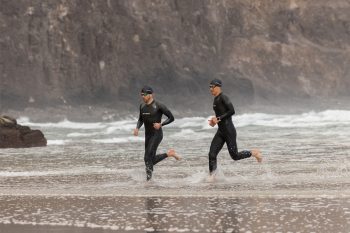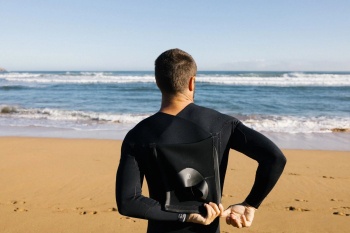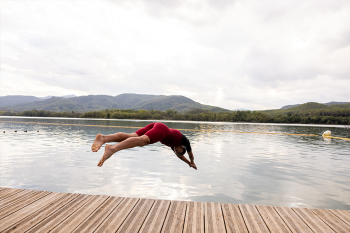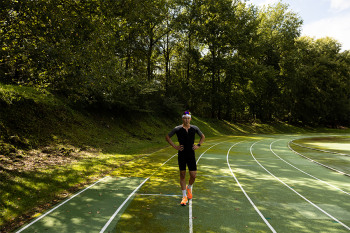A Beginner Guide to Competitive Open Water Swimming
Supported by Orca.
Imagine the vastness of the ocean meeting the determination of the human spirit. It is in this world that novice swimmers embark on a journey to become competitive open water athletes.
In this article, we condense the essential aspects of this incredible sport into 9 guidelines to help you navigate its challenges and hold your own during a race.
Training
The foundation of any successful athlete lies in consistent and structured training. Open water swimming requires building endurance, strength, and technique. Incorporate regular training sessions, both in the pool, gym and open water, to prepare your body for the demands of the sport. Train for the race you are in, if you are going to be sprinting then train sprinting. Extensive zone 2 training sessions will not benefit your wind sprints.

Technique
Developing efficient and effective swimming techniques is crucial. Focus on mastering perfect body position, an efficient breathing strategy, and practise maintaining excellent technique at a variety of stroke cadences. Seek guidance from a peer or coach to refine your technique and ensure optimal performance. If possible, film yourself in the water and analyse your technique.
Sighting and Drafting
Open water swimming introduces environmental variables. Learn to sight effectively by lifting your head out of the water to navigate and stay on course. Practise sighting off things high on the horizon. Additionally, practice drafting, which involves swimming closely behind another swimmer to reduce resistance and conserve energy.
Mental Strength
Open water swimming is not just about physical endurance; it requires mental strength and resilience. The lion's share of your training and preparation will be done in solitude. Embrace the challenges, stay focused, and develop strategies to overcome your fears. Believe in yourself and your abilities.

Race Day Preparation
Prepare yourself mentally and physically for race day. Familiarise yourself with the race route, understand the rules and safety regulations by attending the briefing, and most importantly- have a race strategy (and stick to it). Pack all necessary equipment, such as non foggy goggles, swim cap, wetsuit (if required), and consider using lubricants to prevent chafing.
Open Water Navigation
Improve your navigation skills to stay on course during races. Practice sighting techniques regularly and learn to read the currents and waves. Understanding the environment will help you make strategic decisions during a race.
Race Strategy
Develop a race strategy that aligns with your strengths and goals. Pace yourself, conserve energy, and plan for the unpredictable nature of open water conditions. Do not change your strategy mid race on a whim.
Enjoy the Journey
Finally, remember to enjoy the journey. Open water swimming is a beautiful and challenging sport that offers incredible experiences. Embrace the sense of freedom and connection with nature that comes with swimming in the open water. Celebrate your victories, big and small, and LEARN from each experience to grow as an athlete.
Embrace the challenges, conquer your fears, and celebrate the milestones along the way. The open water awaits you, and the possibilities are endless.
Need some more info about open water swimming?
Check out our other posts in collaboration with Orca…
A Guide to Choosing a Wetsuit for Open Water Swimming
How to Care for your Swim Wetsuit
9 Essentials for Open Water Swimming
What’s the Difference Between a Swim Wetsuit and a Surf Wetsuit?
9 Training Tips for your First Triathlon
Should I Buy a Specialist Open Water Swimming Wetsuit?
Orca wetsuit guide
-
Shop the full Orca range - HERE
Shop the full Orca wetsuit range - HERE
Updated on 28th March 2024
Originally published on 4th March 2024 in Swimming

























































